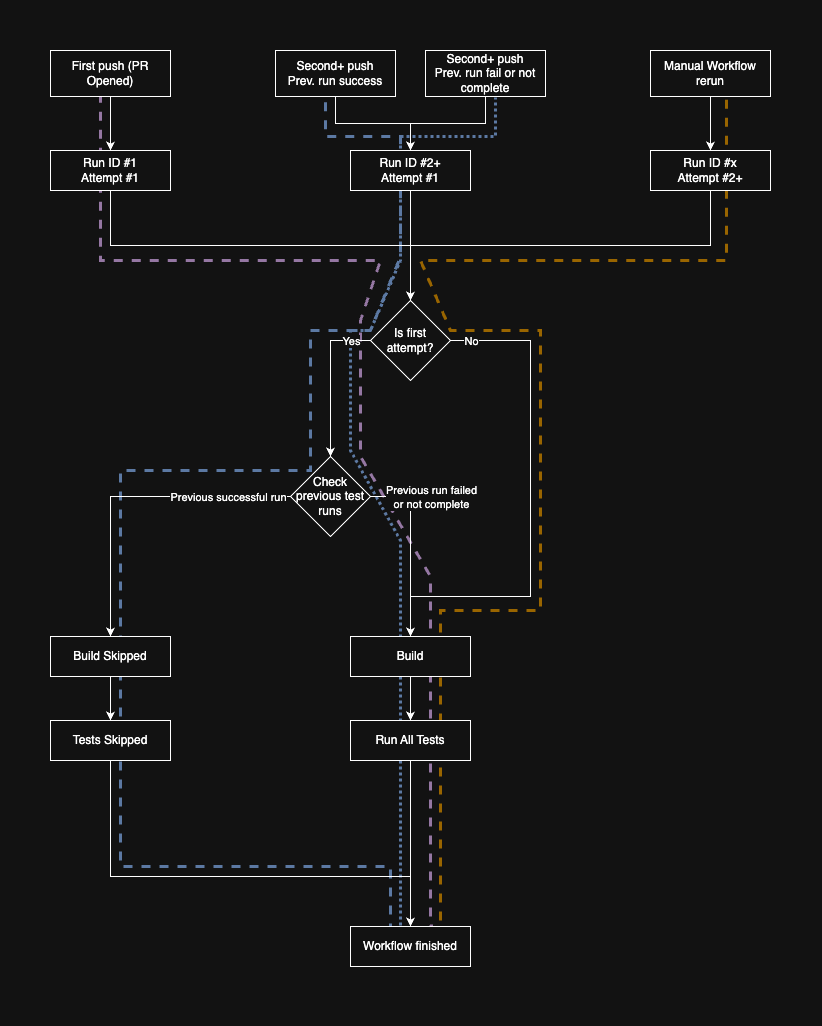E2E tests CI pipelines for Trezor Suite web and desktop
Let's have a look at how CI pipelines for E2E tests are set up.
Test runner + reporting
We are using Playwright in combination with Currents.dev to run and orchestrate our E2E tests. All pipelines mentioned in this document have a desktop and web version. Their flows are identical, the only difference is which version of the app is tested.
Features
- Currents reporting - Test reports and very useful statistics are available in https://app.currents.dev/
- Currents orchestration - Tests are running in parallel groups and the tests are dynamically distributed to these groups to optimize execution time.
- Configurable fail fast - If a given number of tests fails, all the parallel groups are terminated and the rest of the testing is skipped. This is used to save resources and time in case of heavily broken build.
- Test retries - The test runner is configured to perform up to two retries (i.e. maximum of 3 runs) to deal with test flakiness
Note manual workflow reruns and orchestration
Due to the dynamic distribution of tests to the groups, we advise you to always use the option to rerun all jobs and never only the failed ones. That is because the orchestration would have less workers to run the tests and it would cause your test execution to be unnecessarily long.
When to use manual reruns
Please use manual workflow rerun in case you've made significant and dangerous changes in subsequent pushes after your tests already passed once and would be skipped.
When to NEVER use manual reruns
You should never need to manually rerun tests, because you think the fail is caused by flakiness. This is already solved by the built-in retries and the fail is most likely real and will occur again in the rerun.
Pull request pipeline
Description and usage
This is the most commonly triggered pipeline, because it runs as part of each PR verification. It is optimized to save resources, when tests already successfully passed.
Triggers
- Open PR
- Push to PR
Flow
This CI pipeline decides whether to build app and run E2E tests following this logic:
🔹 Is First Attempt?
-
Yes (e.g. initial run after a push):
- Check Previous Test Runs:
- ✅ If a previous successful run exists:
- 🛑 Skip Build
- 🛑 Skip Tests
- ❌ If no successful run exists (failed or incomplete):
- 🔄 Run Build
- ✅ Run All Tests
- ✅ If a previous successful run exists:
- Check Previous Test Runs:
-
No (e.g. a manual rerun of the same workflow run):
- 🔄 Run Build
- ✅ Run All Tests
Flowchart representation:

Nightly and FW canary pipelines
Description and usage
These pipelines are running nightly scheduled tests on develop branch. The FW canary is using firmware built from main branch to verify the latest build.
Triggers
- Cron
Test runner configuration
- Fail fast disabled
Flow
The pipeline always runs all the tests with no additional logic.
Release pipeline
Description and usage
This pipeline serves as a release candidate verification.
Triggers
- Push to release branch
Test runner configuration
- Fail fast disabled
Flow
The pipeline always runs all the tests with no additional logic.